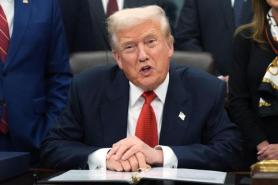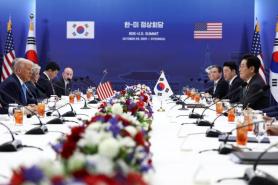
When South Korea and the United States released a joint fact sheet on Nov. 14, it marked the end of 10 months of bruising trade negotiations set in motion by U.S. President Donald Trump.
The agreement is sweeping: Seoul will commit $200 billion to U.S.-designated projects and another $150 billion to the American shipbuilding industry, on top of a $150 billion investment pledge made in August. In exchange, Washington will cap tariffs on South Korean automobiles and pharmaceuticals at 15 percent, and semiconductor duties will be aligned with those applied to other trading partners.
Reactions to the deal have split sharply. Supporters hail it as a pragmatic compromise that stabilizes a volatile trade relationship. Critics see capitulation. Evaluating the agreement requires separating what happened at the bargaining table from what its outcomes may ultimately mean.
On the facts alone, the picture is stark. The United States raised tariffs on South Korean goods from zero to 15 percent and secured enormous investment commitments. For many in Seoul, this looks unambiguously like a loss — the result of negotiating under duress with a far stronger counterpart. The analogy to David and Goliath is almost unavoidable, though this time the slingshot missed.
Placed in a broader regional context, Washington’s strategy offers a clearer explanation. The administration treated Asia less as a collection of individual partners than as a competitive bloc anchored by Japan.
By imposing blanket tariffs, it pitted U.S. allies against one another while extracting concessions from both. South Korea and Japan were hit with identical 15 percent tariffs on autos — up from zero for Korea and 2.5 percent for Japan — while steep steel duties of 50 percent remain in place.
Whether the agreement ultimately benefits either country will hinge on implementation, particularly concerning investment commitments. If the U.S. Supreme Court eventually rules that Trump’s tariffs exceeded presidential authority, Washington could be compelled to refund the duties collected. But the pledged investments, by all indications, will move ahead regardless of what the courts decide.
That raises deeper questions for South Korea. The United States hopes to direct these projects; Seoul, understandably, wants influence over where and how its capital is used.
Domestic political resistance is likely, especially from labor unions wary of shifting resources abroad at a moment of economic unease at home. The deal underscores a broader challenge for South Korea: unless it strengthens its own economic foundations, it will remain vulnerable to high-pressure diplomacy.
About the author
-B.A. in Economics, Seoul National University
-Ph.D. in Economics, University of Texas at Austin
-Chairman, Trade Negotiation Advisory Committee
* This article, published by Aju Business Daily, was translated by AI and edited by AJP.
Copyright ⓒ Aju Press All rights reserved.



